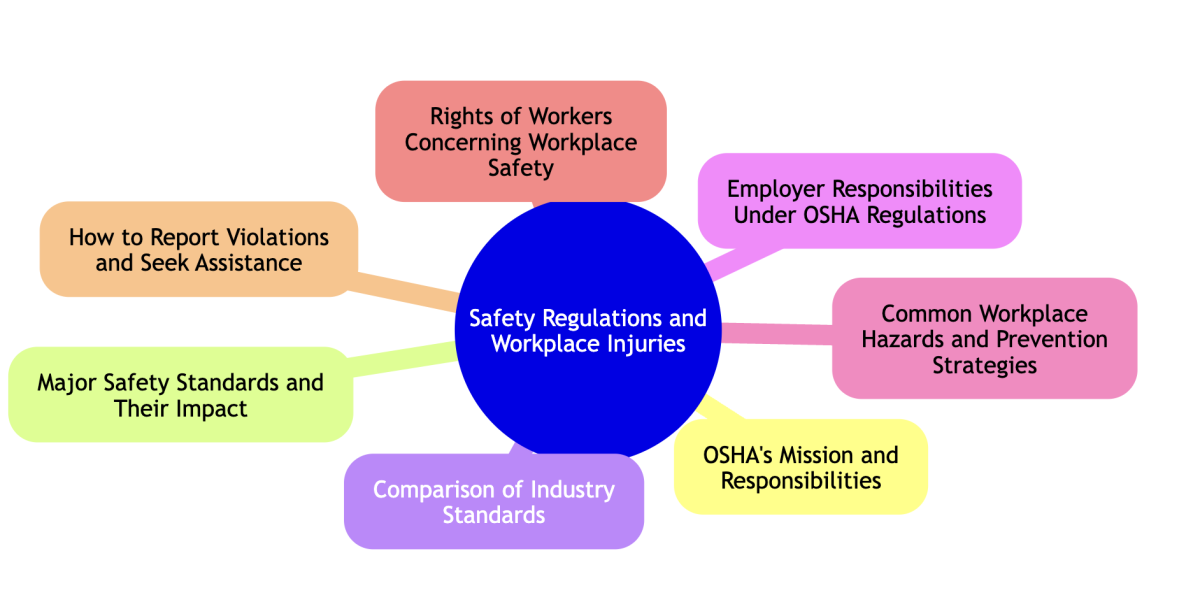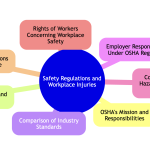Understanding OSHA's Role in Workplace Safety
Occupational safety is a right that every worker in the country shares.
The Occupational Safety and Health Administration (OSHA) regulates workplace safety standards, which every employer must uphold.
OSHA educates and empowers employers and employees to maintain safety standards through comprehensive training and clear communication.
RG Injury Law—the best workers' compensation attorney in Lancaster, PA—knows OSHA law up and down, front and back. Let us clear the waters of safety regulations and workplace injuries.
Key Takeaways from OSHA’s Mission
- OSHA's Mission and Responsibilities: Sets and enforces standards to ensure safe working conditions.
- Key Standards and Regulations: Implements safety measures across various industries.
- Training Programs and Resources: Offers educational materials and programs to enhance workplace safety.
- Rights and Protections for Workers: Ensures workers have the right to a safe environment and to report unsafe conditions.
- How to File Complaints: Provides a system for workers to report safety concerns and access support.

Major Safety Standards and Their Impact on Workplace Safety
From towering skyscrapers to sprawling farms, the landscape of American industry is diverse—and so are its challenges.
OSHA’s safety standards address the specific risks associated with different sectors, including general industry, construction, maritime, and agriculture.
These standards prevent workplace injuries and ensure every worker returns home safely.
Comparison of Industry Standards
|
Industry |
Risk Exposure |
Training Requirements |
Enforcement Tactics |
|
General |
Moderate, varies by job type |
Mandatory safety courses |
Regular inspections, penalties for non-compliance |
|
Construction |
High, frequent heavy machinery use |
Extensive safety training for high-risk tasks |
Targeted inspections, strict penalties |
|
Maritime |
Very high, harsh environments |
Specialized training for onboard equipment |
Intensive inspections, severe penalties for violations |
|
Agriculture |
Moderate to high, depending on machinery and chemical use |
Specific training on equipment and pesticide use |
Spot checks, community outreach for compliance |
Employer Responsibilities Under OSHA Regulations
What are employers' primary responsibilities under OSHA regulations?
Employers must provide a safe working environment free from recognized hazards.
This involves adhering strictly to OSHA's safety standards and regulations. Employers must regularly inspect their workplaces to identify and address potential safety issues promptly.
They must also train their employees on safety procedures relevant to their specific job roles, ensuring that this training is accessible and understandable to all employees, regardless of their primary language.
Here is a screenshot from part of an OSHA regulation on employer ladders (1):

Significant Responsibilities for Employers:
- Maintain Safe Working Conditions: Ensure the workplace is free from serious recognized hazards and complies with OSHA standards and regulations.
- Provide Necessary Safety Equipment: Equip workers with the required safety gear and maintain it properly.
- Conduct Regular Training and Emergency Drills: Offer regular safety training sessions and emergency response drills to prepare employees for unexpected situations.
- Report and Record: Keep accurate records of work-related injuries and illnesses and report severe incidents as mandated by OSHA regulations.
- Open Communication: Keep lines of communication open with employees regarding workplace safety and health issues.
Common Workplace Hazards and Prevention Strategies
What are common workplace hazards, and how can they be prevented?
Ensuring a safe workplace involves recognizing common hazards and implementing effective prevention strategies. Below are some of the critical areas where hazards frequently occur, along with strategies for mitigation.
Hazards Related to Machinery and Equipment
Machinery and equipment can pose significant risks if not properly maintained. Employers should enforce regular maintenance schedules and train workers on safe operation procedures.
Chemical Safety and Handling Procedures
Handling chemicals requires strict safety protocols. Employers should train workers on proper handling techniques and emergency response in case of a chemical spill or exposure.
Ergonomics and Injury Prevention
Improving workplace ergonomics helps prevent injuries. Employers should provide ergonomic assessments and modify workstations to reduce strain and prevent musculoskeletal disorders.
Emergency Response and Preparedness
A well-prepared workplace can effectively respond to emergencies. Employers should develop and regularly update emergency action plans, conduct drills, and ensure all employees know their roles in an emergency.
Key Preventive Measures
- Regular Inspections: Routinely check all equipment and safety measures to ensure they are up to standard.
- Personal Protective Equipment (PPE): Provide and maintain necessary PPE for all workers.
- Training: Conduct ongoing training sessions covering all potential hazards and the correct use of safety equipment.
- Safety Signs: Use clear signs and labels to warn and guide employees about potential hazards.
Rights of Workers Concerning Workplace Safety
What rights do workers have under the OSHA Act?
Every worker in the United States is entitled to a safe workplace, a fundamental right under the Occupational Safety and Health Act (OSH Act).
Employers must provide environments free from known hazards, and workers have the right to speak up about workplace safety without fear of retaliation.
Additionally, employees are entitled to receive safety training in a language they understand and to use safe tools and equipment.
Worker Safety Rights Table
|
Right |
Description |
|
Safe Workplace |
Employers must ensure the workplace is free from recognized hazards. |
|
Refuse Unsafe Work |
Workers can refuse work if they believe it poses an immediate risk to their safety. |
|
Safety Training |
Employers must provide training in a language and vocabulary workers can understand. |
|
Access to Safety Equipment |
Employers must provide personal equipment at no cost to the employee. |
|
OSHA Inspection Request |
Workers can request an OSHA inspection if they believe their workplace is not compliant with safety standards. |
How to Report Violations and Seek Assistance
How can workers report safety violations? Workers who observe potential safety violations have several avenues to report these issues.
The first step is typically to report internally to a supervisor or through designated safety channels within the company. If the issue is not resolved internally, workers can file a confidential complaint with OSHA, requesting an inspection.
What protections do whistleblowers have against retaliation?
OSHA strongly protects the rights of whistleblowers. It is illegal for employers to retaliate in any way against employees who exercise their rights under workplace safety laws, including reporting safety violations. Workers who believe they have been retaliated against may file a whistleblower complaint with OSHA, which must be done within 30 days of the alleged retaliation.
Conclusion: The Importance of Compliance and Safety Awareness
Compliance with OSHA regulations is essential for maintaining a safe and healthful working environment.
Adhering to these standards helps prevent workplace injuries and illnesses, thereby saving lives and enhancing productivity.
How does RG Injury Law support workers' rights and safety?
At RG Injury Law in Lancaster, PA, the commitment to advocating for workers' compensation and personal injury clients is unmatched.
Their expertise ensures that workers' rights are defended, and they provide crucial support for navigating through the complexities of workplace injuries and safety violations.
Their dedicated approach helps secure the justice and compensation that injured workers deserve.
Reference:
- Occupational Safety and Health Administration, Safety and Health Regulations for Construction, https://www.osha.gov/laws-regs/regulations/standardnumber/1926/1926.501









